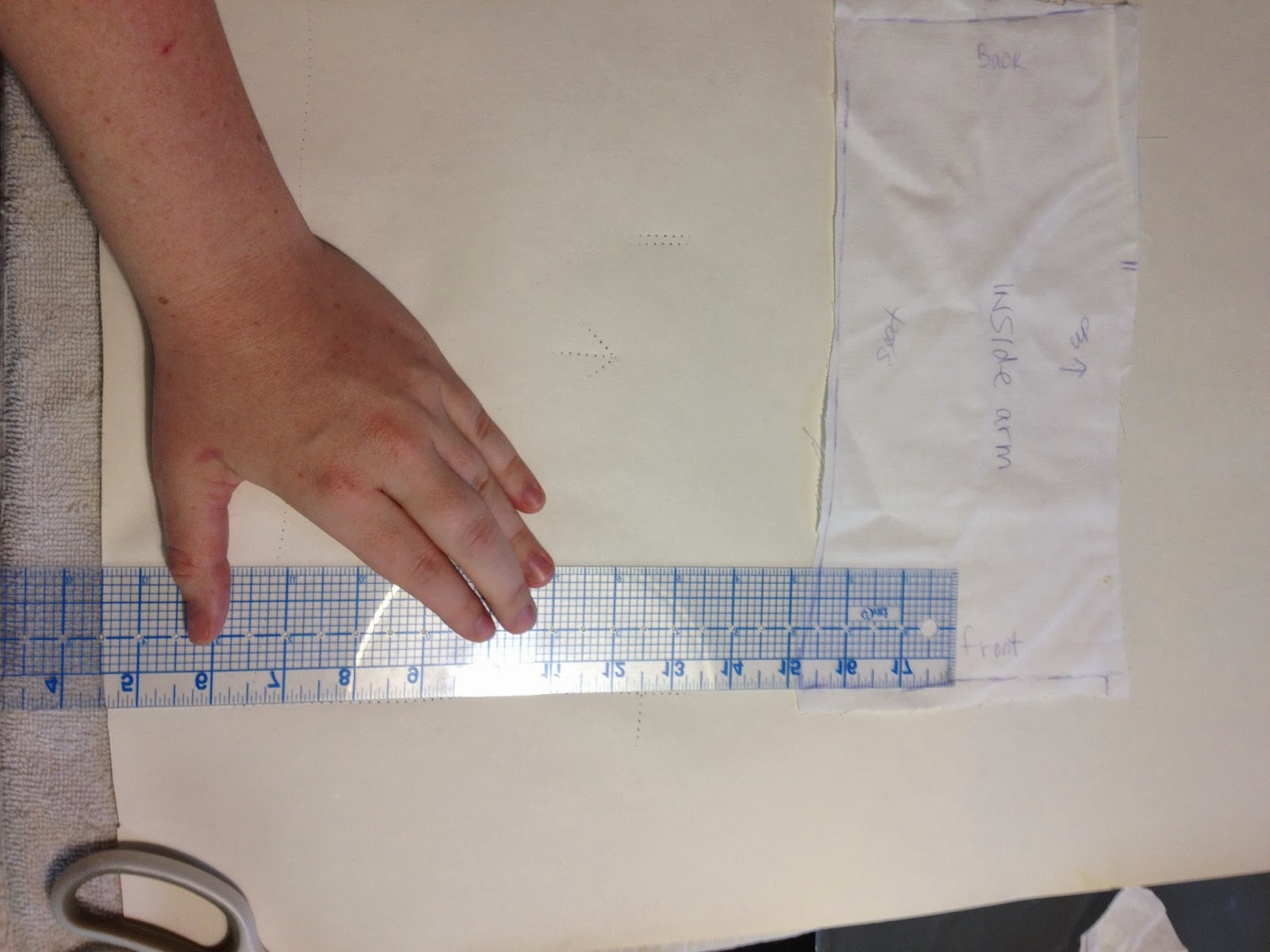So I started this project because children's nightgowns have become very thin and cheap in my opinion. Every time I go to the store to buy something I look at the nightgowns and decide against purchasing and always saying " I could make that" in my head. Problem is, I usually don't get around to actually making it. I am proud to say this is the one time I came home on a full speed mission.
This project took me 3 hours (with many little interruptions). I would estimate it could go together within an hour based on your sewing speed. I started with a nightgown that we bought a while ago. I used this as my pattern. I also grabbed an old t-shirt that I would have been donating.
Supplies You will need:
 Scissors, Straight pins, a ruler, Child's nightgown for pattern, t-shirt, sewing machine, (serger optional)
Scissors, Straight pins, a ruler, Child's nightgown for pattern, t-shirt, sewing machine, (serger optional)
The great thing about t-shirt material is that it will not fray on you so you really don't need a serger but you can certainly use one if you have one.
Let's Begin!!!
First you will want to make sure your child size nightgown will fit within your t-shirt size. This t-shirt was an adult medium. next cut off the sleeves and cut down the sides (as close to the seam as you can so it's not uneven). Then separate just the front piece. Line up the neck (the front neckline of the nightgown) to the neck line of the t-shirt. You will be using the original neck to avoid having to finish off your new nightgown!!Make sure the shoulder line is touching the shoulder of the original t-shirt (even if only at the corner of the neck). Next fold in the sleeves of the nightgown down to the
arm hole seam. Cut around this (one) side of the night gown from the shoulder- through the arm hole and down to the bottom at the side. Leave about 1/2" seam allowance all the way around the nightgown. SAVE YOUR SCRAPS!!You will need little extras for later, don't throw anything away until you are completely done.
Your new neck opening should look like this:
Next, fold the cut side over to the non-cut side and cut around it to make both sides even. Cut across the bottom evenly to make a nice straight bottom. Then line up the front to the back at the shoulders and cut around the back so you have a front and back of the nightgown. Line up the shoulders with the right sides of the nightgown together pin the shoulders and stitch straight across> Just sew the shoulders right now (don't get too excited and sew anything else just yet).
Now on to the sleeves!!! The picture at the top left is the sleeve just as it was cut from the shirt with the folded edge pointing upward. Next place the child's nightgown sleeve on top of the shirt sleeve lining up the original edge of the sleeve this will once again help you because it will be less finishing at the end!!! Then pin down the child's sleeve so it stays in place. Flip the child's nightgown over so you can see the edge of the arm hole. Cut leaving 1/2" seam allowance. Note: your new sleeve should have this shape (bottom picture) and this is folded in half.
Line your sleeve up. Start by placing the sleeve facing down (look at the finished edge if you get confused). Place a pin in the center of the sleeve matching it up to the center of the shoulder. Then also line up the side and center in between these two (third picture) Doing it this way gives you "landmarks" and then you can continue to go in between each of these pins until you have pinned the entire sleeve in the armhole. Sew this armhole opening. Tip: while pinning and/or sewing stretch the fabric and it will line up and lay flat against one another.
Your sewn arm opening should look like this. The side seams are not yet sewn.



Line up your sides and bottom of the sleeves with right sides together. They should line up like the picture on the left. Pin all the way down (right) and sew together.
Go back to your scraps and cut off the finished edge of the original shirt. Leave a small amount above the original stitches when you cut. Line them up to the new nightgown and make sure you have just enough. Cut down to correct size if needed. Next, pin the hem to the nightgown and stitch down on top of the original stitches.
TA-DA!!!
Now you can add details.... if you want..... or maybe not?
Here's what I did:
And there you have it!


































